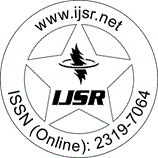Downloads: 6
Bulgaria | Dental Science | Volume 14 Issue 10, October 2025 | Pages: 1147 - 1155
Outcomes of Managing Separated Endodontic Instruments at Various Anatomical Sites: A Retrospective Study
Abstract: Instrument separation is recognised as a frequent and challenging complication in endodontic practice. Rotary instruments, while highly efficient, are more prone to fracture compared with manual files, primarily due to cyclic fatigue and torsional stress. Such events can compromise canal preparation and negatively influence the prognosis of the treated tooth. This paper aimed to review the principal strategies for managing separated instruments during root canal treatment and to highlight the clinical considerations that guide the selection of appropriate interventions. Management approaches are generally classified into conservative and surgical modalities. Conservative treatment encompasses three principal options: bypassing the fragment, retrieving the fragment, or preparing and obturating the canal coronal to the obstruction. Retrieval is the most technically demanding procedure, requiring advanced endodontic equipment such as ultrasonic devices and a dental operating microscope, together with a high level of operator expertise. The present study demonstrated an overall success rate of 92.78% (95% CI = 89.0?96.5%) for the removal of separated endodontic instruments, significantly exceeding the expected benchmark of 80% (p < 0.001). Despite the inherent risks of dentine loss and potential root perforation, conservative retrieval remains a predictable and biologically respectful option. Careful case selection, advanced magnification, and evidence-based decision-making are crucial for achieving optimal, functionally stable outcomes.
Keywords: broken instrument, endodontics, fractured instrument, separated instrument, management of separated instruments, prognosis
How to Cite?: Gusiyska A., "Outcomes of Managing Separated Endodontic Instruments at Various Anatomical Sites: A Retrospective Study", Volume 14 Issue 10, October 2025, International Journal of Science and Research (IJSR), Pages: 1147-1155, https://www.ijsr.net/getabstract.php?paperid=SR251022181827, DOI: https://dx.doi.org/10.21275/SR251022181827
